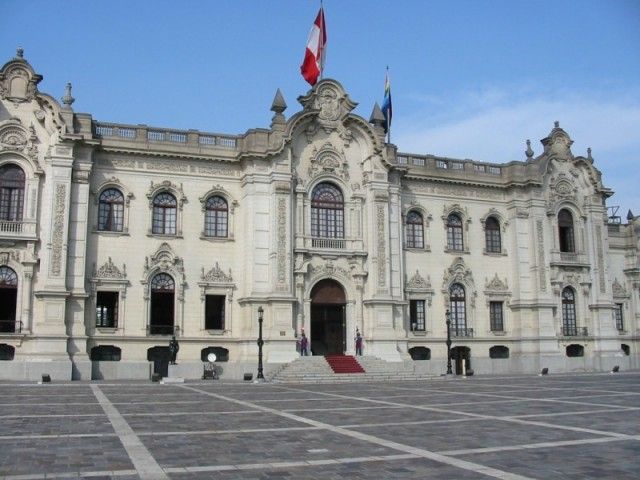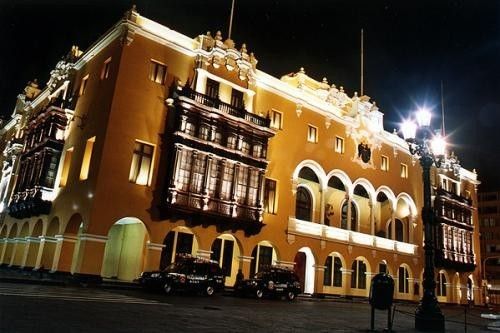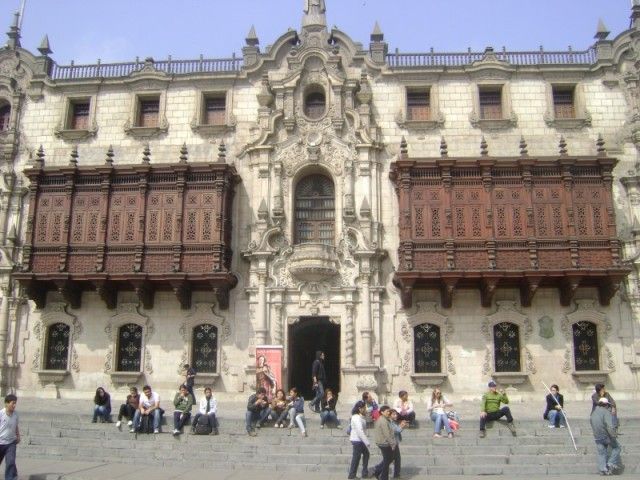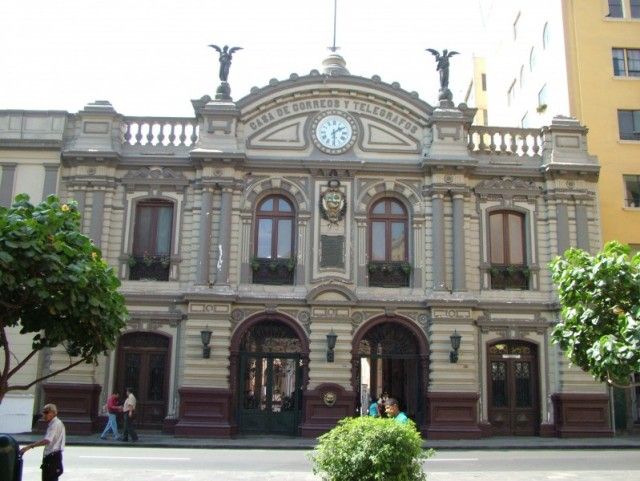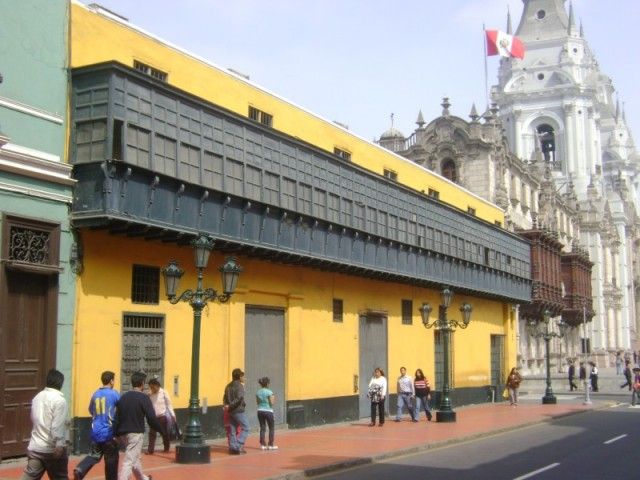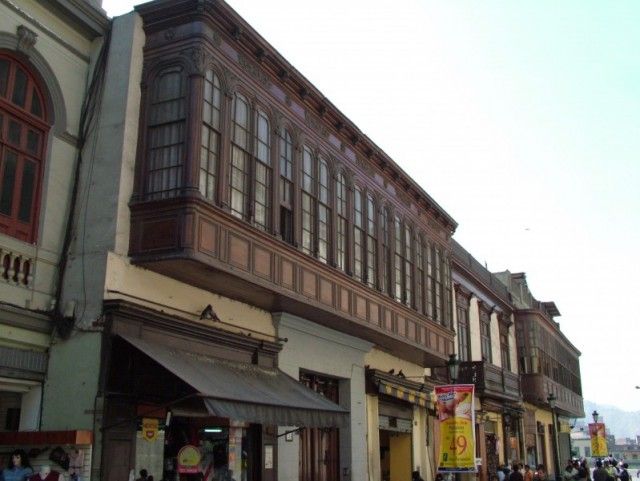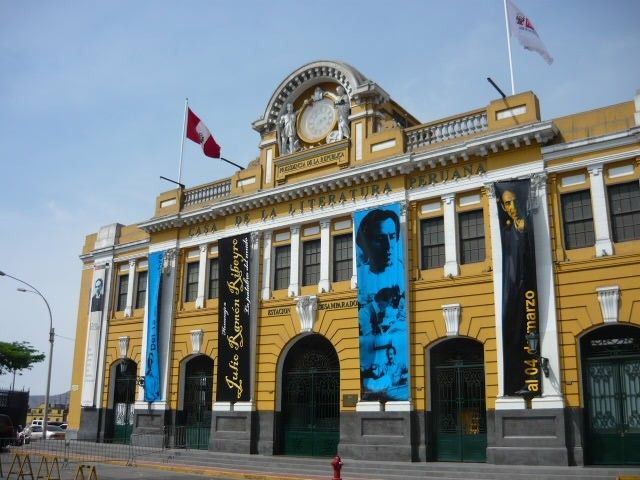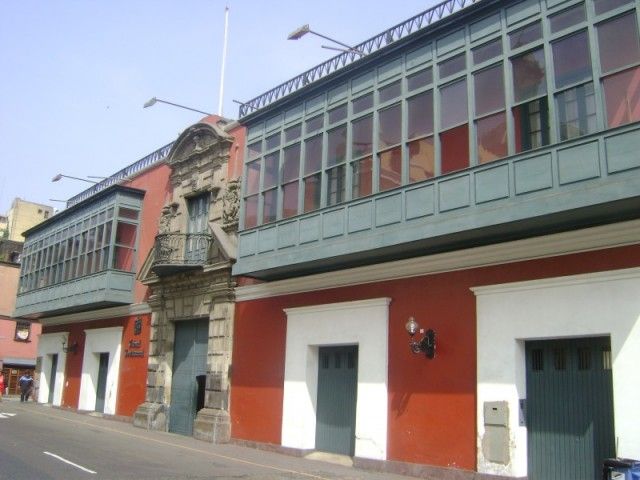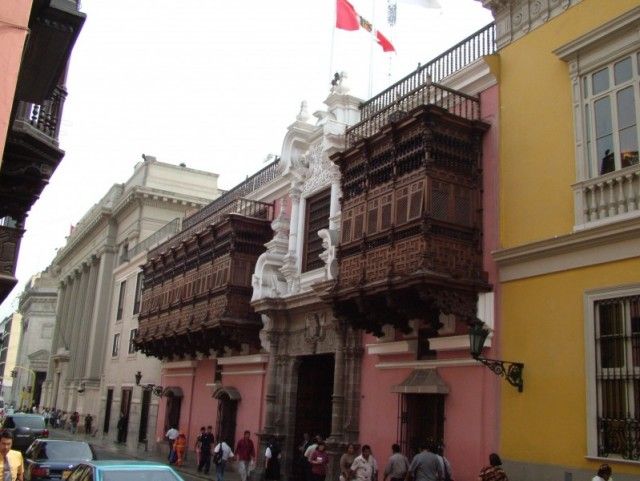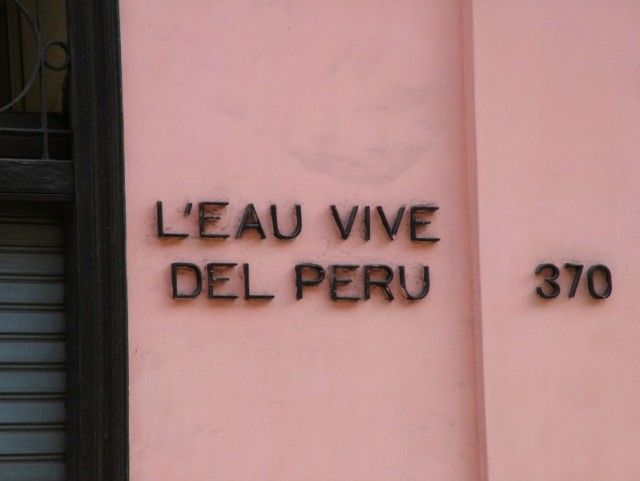- Peru Guide
- Peruvian Visa Types
- Public Holidays & Festivals
- Peru Info
- Culture & Entertainment
- Legal Stuff
- Customs Regulations & Info
- How many days did I get?
- Tourist Visa extension in Peru
- Peruvian Overstay Fine
- International Document for Antecedentes Peru
- Paying Administration Charges
- Permit to Sign Contracts
- Interpol - Ficha de Canje
- Travel Permit
- Subsanacion - Submitting documents
- Extending a Migraciones deadline
- Residence visa extension
- Renewal Carné de Extranjería
- Update Migraciones information
- Carné replacement
- Marrying in Peru
- Driver's License in Peru
- Police Clearance Certificate Peru
- Travel Authorization for Minors
- Finding a Job in Peru
- Domestic Workers in Peru
- Labor Regulations Peru
- Air Passenger Rights
- Safety, Security & Travel Advice
- Shopping in Peru
- Stay Connected
- Business Guide
- Earthquakes
- Emergencies & Help
- History of Peru
- Education, Teaching & Schooling
- Glossary of Terms
- Lima Guide
- Travel & Sights
- Food
- Money
- Events
- Opinion
- Media
- Peru Guide
- Peruvian Visa Types
- Public Holidays & Festivals
- Peru Info
- Culture & Entertainment
- Legal Stuff
- Customs Regulations & Info
- How many days did I get?
- Tourist Visa extension in Peru
- Peruvian Overstay Fine
- International Document for Antecedentes Peru
- Paying Administration Charges
- Permit to Sign Contracts
- Interpol - Ficha de Canje
- Travel Permit
- Subsanacion - Submitting documents
- Extending a Migraciones deadline
- Residence visa extension
- Renewal Carné de Extranjería
- Update Migraciones information
- Carné replacement
- Marrying in Peru
- Driver's License in Peru
- Police Clearance Certificate Peru
- Travel Authorization for Minors
- Finding a Job in Peru
- Domestic Workers in Peru
- Labor Regulations Peru
- Air Passenger Rights
- Safety, Security & Travel Advice
- Shopping in Peru
- Stay Connected
- Business Guide
- Earthquakes
- Emergencies & Help
- History of Peru
- Education, Teaching & Schooling
- Glossary of Terms
- Lima Guide
- Travel & Sights
- Food
- Starter & Appetizer
- Sandwiches
- Soups
- Main Courses
- Salsas, Sauces & Dips
- Desserts
- Snacks
- Drinks & Beverages
- Peruvian Cheese
- Fruits
- Vegetables
- Aji - Chili Peppers
- Grains, Coffee, Beans & Nuts
- Common Herbs
- Other Ingredients
- Money
- Peru Guide
- Peruvian Visa Types
- Public Holidays & Festivals
- Peru Info
- Culture & Entertainment
- Legal Stuff
- Customs Regulations & Info
- How many days did I get?
- Tourist Visa extension in Peru
- Peruvian Overstay Fine
- International Document for Antecedentes Peru
- Paying Administration Charges
- Permit to Sign Contracts
- Interpol - Ficha de Canje
- Travel Permit
- Subsanacion - Submitting documents
- Extending a Migraciones deadline
- Residence visa extension
- Renewal Carné de Extranjería
- Update Migraciones information
- Carné replacement
- Marrying in Peru
- Driver's License in Peru
- Police Clearance Certificate Peru
- Travel Authorization for Minors
- Finding a Job in Peru
- Domestic Workers in Peru
- Labor Regulations Peru
- Air Passenger Rights
- Safety, Security & Travel Advice
- Shopping in Peru
- Stay Connected
- Business Guide
- Earthquakes
- Emergencies & Help
- History of Peru
- Education, Teaching & Schooling
- Glossary of Terms
- Lima Guide
- Travel & Sights
- Food
- Starter & Appetizer
- Sandwiches
- Soups
- Main Courses
- Salsas, Sauces & Dips
- Desserts
- Snacks
- Drinks & Beverages
- Peruvian Cheese
- Fruits
- Vegetables
- Aji - Chili Peppers
- Grains, Coffee, Beans & Nuts
- Common Herbs
- Other Ingredients
- Money
- Lima Guide
- Culture Guide
- Historical Buildings
Historical Buildings
Lima, nowadays is a bustling, chaotic and quite noisy city, has a rich historical and architectural heritage. When Francisco Pizarro founded Lima in 1535 on an existing indigenous settlement, he had explicit orders by the Spanish crown on how to create and organize the city. They based the design and layout of Limas historical Center on the model of cities in Spain, especially Seville. The same applies for the first Colonial houses in Lima.
Initially, the first mansions were all built block (Spanish = Cuadra) by block around Plaza Mayor in a chessboard style and with specific rules as determined by Francisco Pizarro (exact length of one block = 400 feet / 122m and a precise width of the streets = 40 foot / 12.2m). During the Colonial times, the Spanish immigrants developed their own unique architectural style. The origins of this style were very similar to the typical Arabic-Moorish architecture in Spain. The settlers had to adapt to the local environment like earthquakes or the inferiority of building materials, and so soon a very characteristic architectural style developed.
Good examples of unique architectural factors are the famous balconies of Lima; most of them closed balconies with jalousies, of Moorish origin but with an absolutely distinctive Lima style and character. Lima known as the "City of Kings" and "City of Gardens" was soon famous for these extraordinary balconies and known as the "City of Balconies". Lima had so many balconies that nobody ever thought they would be some day something special. The principal reason for building closed balconies was that the first immigrants thought it would be inappropriate for their women to be seen from a window, an open balcony, or when going outside. Therefore, closed balconies like in North-Africa were built, allowing the high society ladies of Lima to see what was going on outside but without being seen.
Presidential Palace
Historical BuildingsIn 1535 Francisco Pizarro founded Lima and built his "palace" exactly on the same place where the main authority of the Rimac Valley at this time, the curazco Taulichusco, had his residence. When Lima was granted the title of Viceroyalty the "Casa de Pizarro" became the first Spanish Viceroys Palace in Lima.Municipal Palace
Historical BuildingsAnother historical and architectural monument surrounding Lima's Plaza de Armas, is the Municipal Palace. The original building dates back to the early 17th century, but was destroyed mainly by earthquakes and fires several times. The current building, still on the same place as Lima's first town hall, was inaugurated in 1944.Archbishop Palace
Historical BuildingsThe Archbishop Palace is situated directly at Plaza de Armas, Lima's main square, next to the Cathedral. This important place in the middle of town reflects the immense power the church had in Colonial Lima. Constructions for the Cathedral of Lima and the original "Palacio Arzobispal" started shortly after the foundation of Lima in 1535.Central Post Office Building
Historical BuildingsThe Central Post Office was opened in 1897 and was responsible for all national and international correspondence. When technology developed and the telegraph was introduced to Peru it became the main relay station for all transmissions. At the beginning of the 20th century the building was completely remodeled to fit into the new European style ...Magistrate House
Historical BuildingsOnly little is known about this house standing at the north-east corner of the Plaza Mayor. It dates back to the end of the 17th century and is one of the oldest mansions in Lima. It got its name "Casa del Oidor" (oidor means in Spanish something like magistrate or "the one that hears / listens") because it is speculated that in Colonial times t...House of the Aliaga Family
Historical BuildingsThe "Casa de Aliaga" is the oldest Colonial mansion in Lima, maybe even in whole South America. The house has been owned and lived in by the Aliaga family and their descendants since Franzisco Pizarro granted the land to Jerónimo de Aliaga in 1535. Originally there was a pre-Colombian altar on that plot of land owned by "Curaca Ta...House of the Peruvian Literature
Historical BuildingsThe building was originally Lima's main train station (Estacion de Desamparados - Desamparados Train Station) and opened in 1912. Situated behind the Presidential Palace at the River Rimac it was a symbol of the progress and development of the city in the beginning of the 20th century. At this time the capital of Peru was completely redesigned.House of Pilatos
Historical BuildingsThe origin of the "Casa de Pilatos" or "Casa de Esquivel y Jarava" (after their first owners) is still not completely uncovered. Based on historical documents and writings left by the famous Peruvian author Ricardo Palma it is assumed that this beautiful mansion was built in 1590 and therefore is one of the oldest Colonial buildings in Lima. The...Torre Tagle Palace
Historical BuildingsConsidered one of the most magnificent buildings in South America, this unique mansion shows the elegance and grace of the architecture in the early 18th century. The palace was built in 1730 by José B. Tagle, the Marquis of Torre Tagle and treasurer of the Royal Spanish fleet. His coat of arms is still visible above the door.L’Eau Vive House
Historical BuildingsThis decent 18th century building was nicely restored in the mid-19th century. Worth mentioning is the beautiful carved open balcony.Peru Newsflash
New lizard species discovered in Peru
There is still so much new to find out about and see in Peru. Just recently Peruvian scientists discovered a…Peru has the second-worst drivers in the world
For those living and driving in Peru it comes to no surprise. A recent study by Compare the Market, an…Machu Picchu reopens for the first time after the social outbreak
The Ministry of Culture of Peru decided to re-open Machu Picchu after it was closed on January 21 because of…Peru extends the state of emergency in 44 districts
The Peruvian government extended the “state of emergency” in 44 districts of the central departments of…
Peru Event Calendar
Mon Tue Wed Thu Fri Sat Sun 12345678910111213141516171819202122232425262728293031Upcoming Events in Peru
Latest Content...
- International Schools in Peru
International Christian School of Lima - ICS Lima
- Peruvian Visa Types
Peruvian Digital Nomad Visa
- Laws, Norms, Legal Codes & Decrees
Legislative Decree No. 1582 (Modification of the Peruvian Foreigner Law, Nov 2023)
- Peruvian Cheese
Queso Rojo de Lluta
- Peruvian Cheese
Peruvian Queso Andino
- Peruvian Cheese
Peruvian Quesillo
- Peruvian Cheese
Peruvian Queso Mantecoso
- Peruvian Cheese
Peruvian Queso Paria
- Peruvian Cheese
Peruvian Queso Fresco
- Legal Stuff
Extension of a Migraciones deadline
- Legal Stuff
Subsanacion - Submitting documents
- Legal Stuff
Amnesty for Migraciones fines
- Legal Stuff
Replacement for a lost, stolen or damaged carné
- Legal Stuff
Renewal of the Carné de Extranjería
Latest Video
Long Reads...
- Peruvian Archaeology
The Mystery of the Nazca Lines in Peru
In the 1920s, when people first flew across southern Peru, they made an astonishing discovery. Stretching below them,… - Peruvian Personalities & Founders
Francisco Pizarro González (1474-1541)
Francisco Pizarro, a peasant from Spain, was one of the least well-equipped conquerors in history. However, in the name… - Peruvian Archaeology
The colorful Fabrics and Textiles of Peru
Europe’s first knowledge of Peruvian textiles was acquired following the Spanish invasion of Peru in 1532, when the… - Peruvian Legends, Myths & Tales
The Jeweled Frog and the Condor
By a quiet pond, at the side of a cloud-topped mountain in Peru, lived a small green frog and his large green family.… - Peru Info
Peruvian Economy
The Peruvian economy is an emerging, social market economy highly dependent on foreign trade and classified as an upper…
Contact us | Editorial Ethics | Support | T&C | Copyright | Privacy | Discussions & Submissions | Cookies Policy | GDPR | CCPA | DMCA


